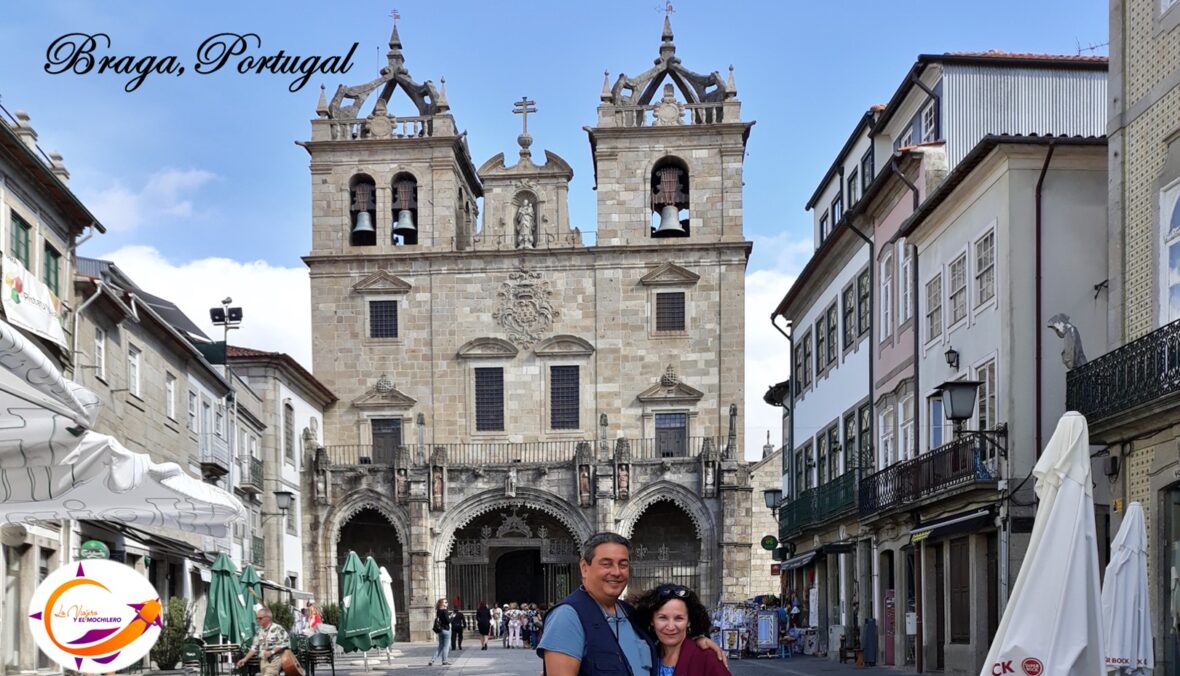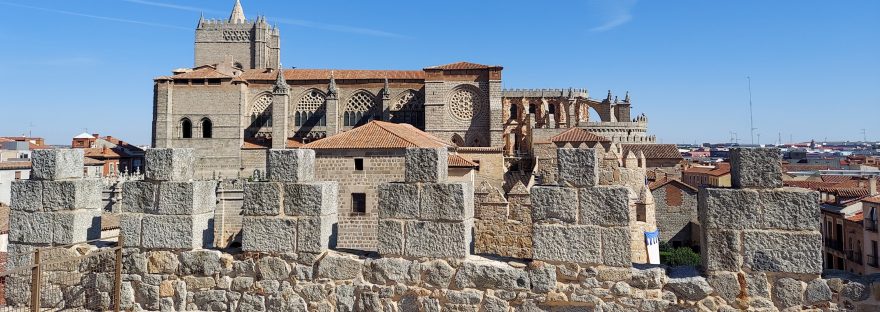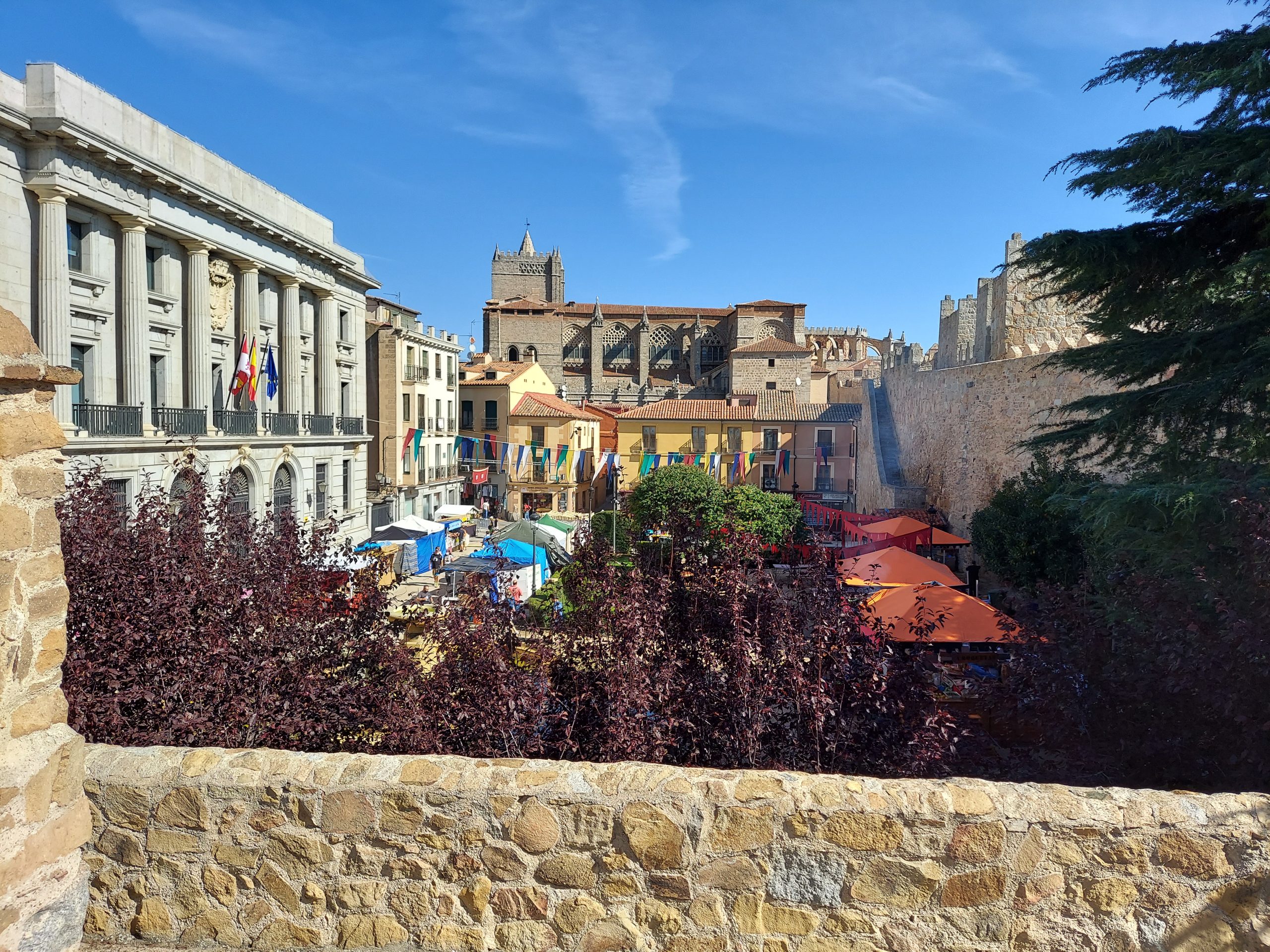
The Cathedral of Avila welcomed us during the city’s Medieval Days celebration, fully decorated for the festivities.
It is during the first weekend of September that the streets of the Spanish city of Avila revives medieval times, making this its most important event. Also known as the “Market of the Three Cultures” where Moors, Christians and Jews, minstrels, merchants, bailiffs and silversmiths, among other characters, can be seen strolling through the streets. It is when the city prepares to receive thousands of visitors who during those days enjoy parades, tournaments, shows, gastronomy, music and plainly have fun.
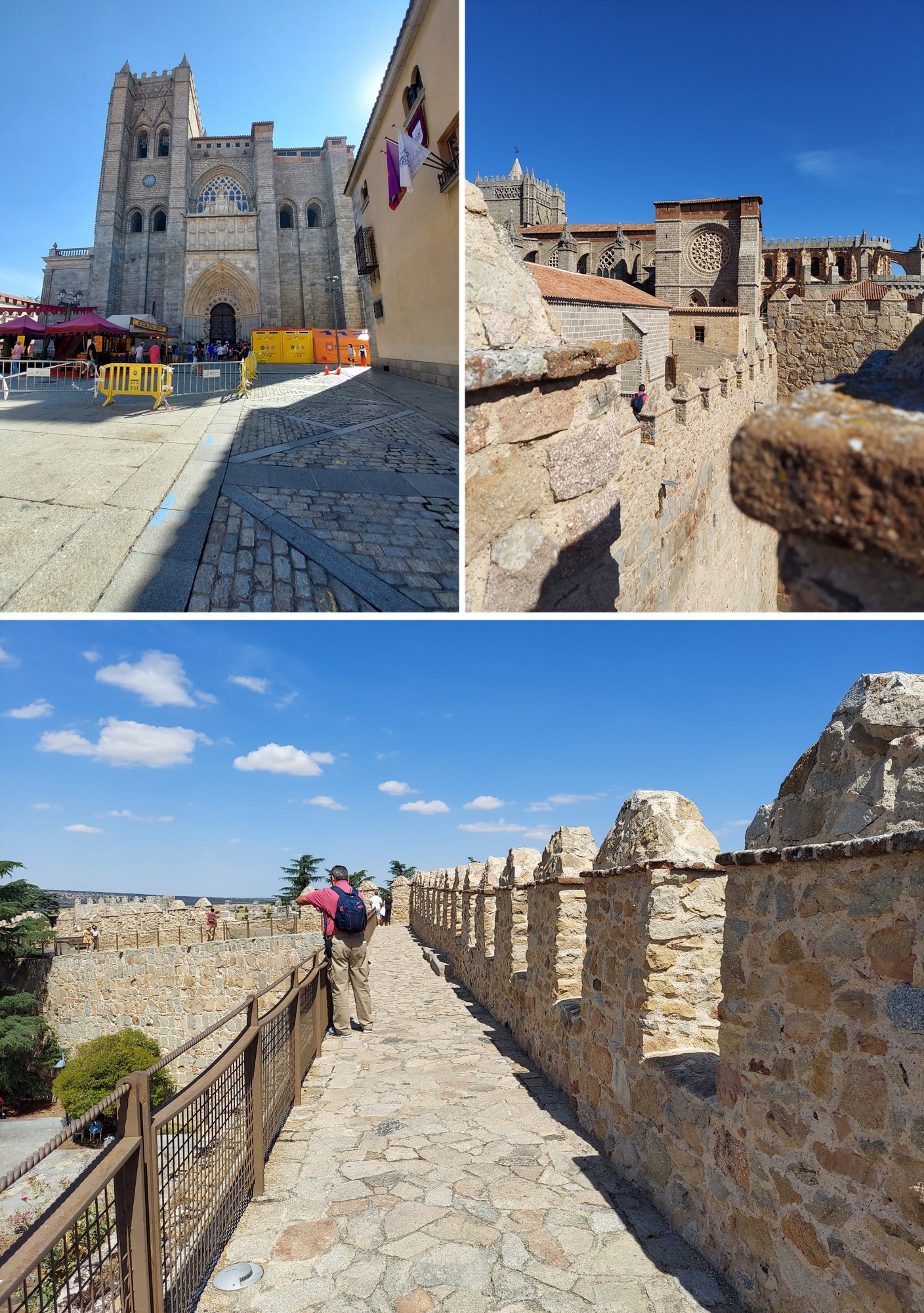
Known as the Cathedral of Christ the Savior of Avila, it was built on the remains of a primitive building dedicated to El Salvador and it was in 1172 that Alfonso VIII decided to enlarge it. The construction of the oldest part of the cathedral, which corresponds to the chevet, is attributed to the French master Giral Fruchel. In addition to the ambulatory, preserving the primitive Romanesque windows; the first body of the transept and the foundation of the walls in “Bleeding Stone” or bleeding “caleño” granite. The result of the works that took place between the 13th and 16th centuries, are the body of the naves, the adjacent chapels and the finishing of the towers.
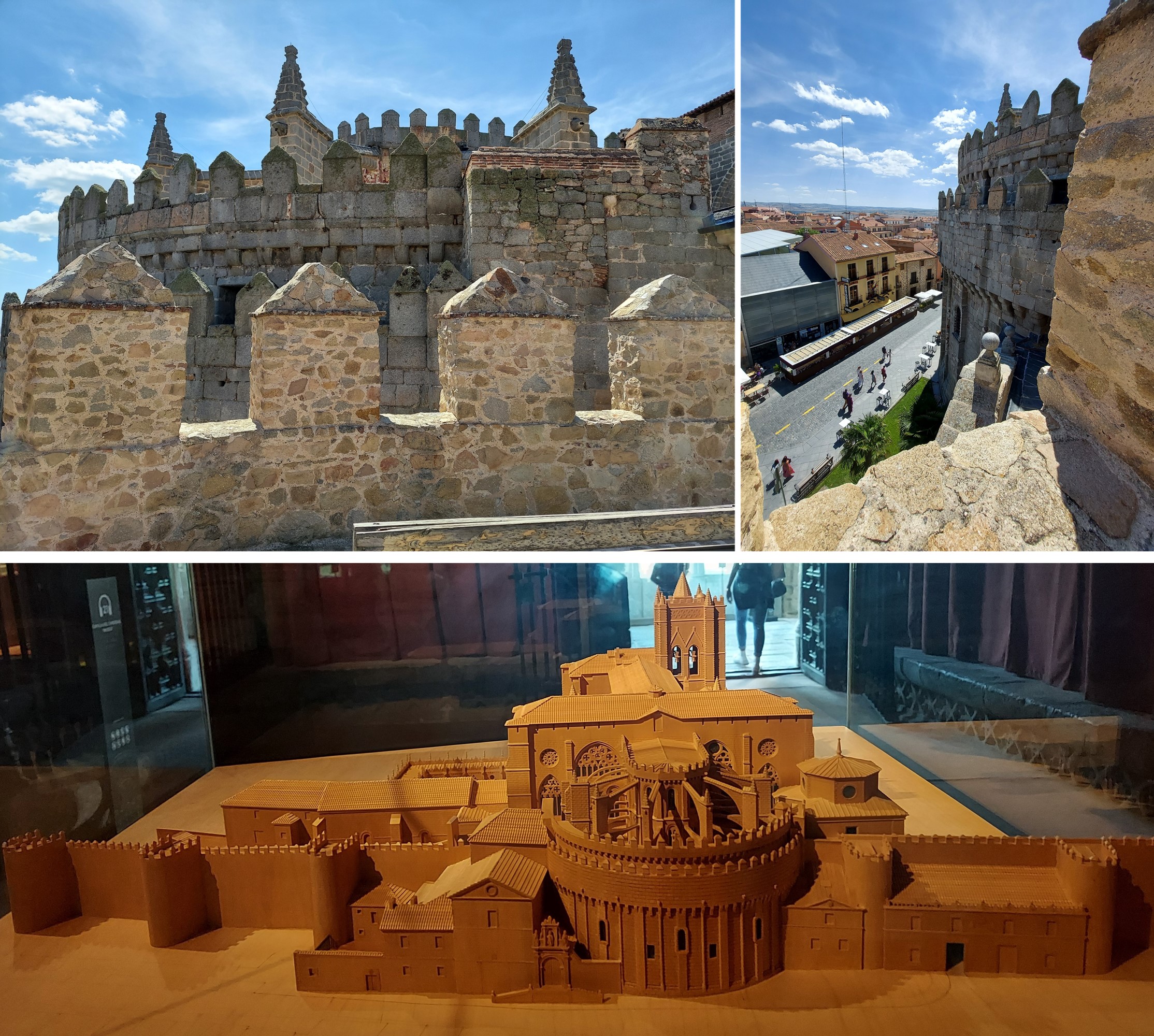
The Cathedral of Avila was designed as a temple and fortress, its apse, known as “cimorro”, being one of the cubes of the city wall. This apse is directly embedded in the wall, as another tower of the same, integrating itself to the whole. In the cimorro the material that dominates is the granite “caleño” bleeding, so named due to the richness in red and white shades.
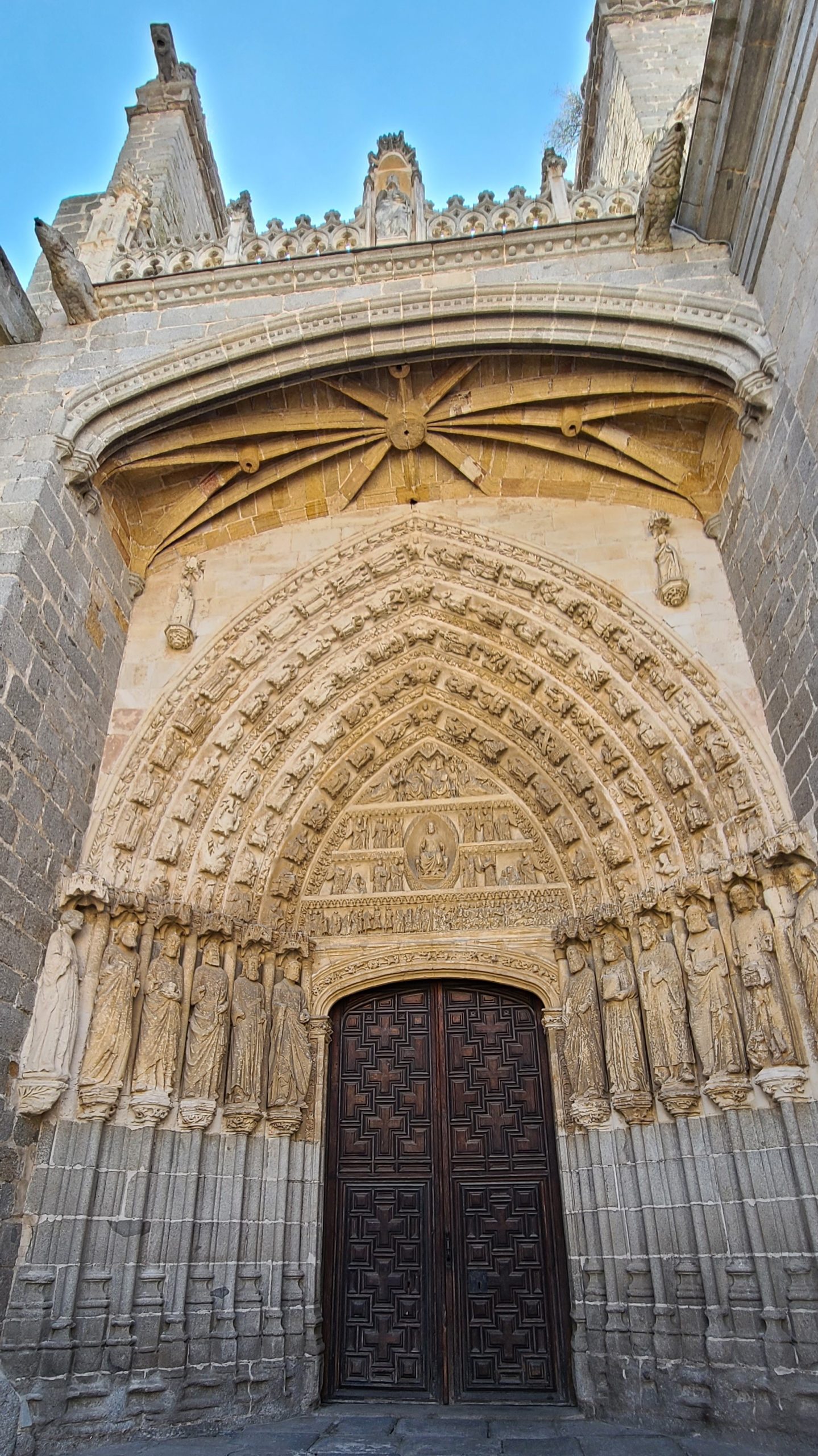
The exterior of the Cathedral of Avila is a sober one, although it achieves an integration of different styles and influences. For example, its plan has French influences that resemble the basilica of Saint-Denis, the first Gothic church built in France. Among its doors is the so-called Door of the Apostles or North Door. It is said to date to around 1300, although its current location is not the original one.
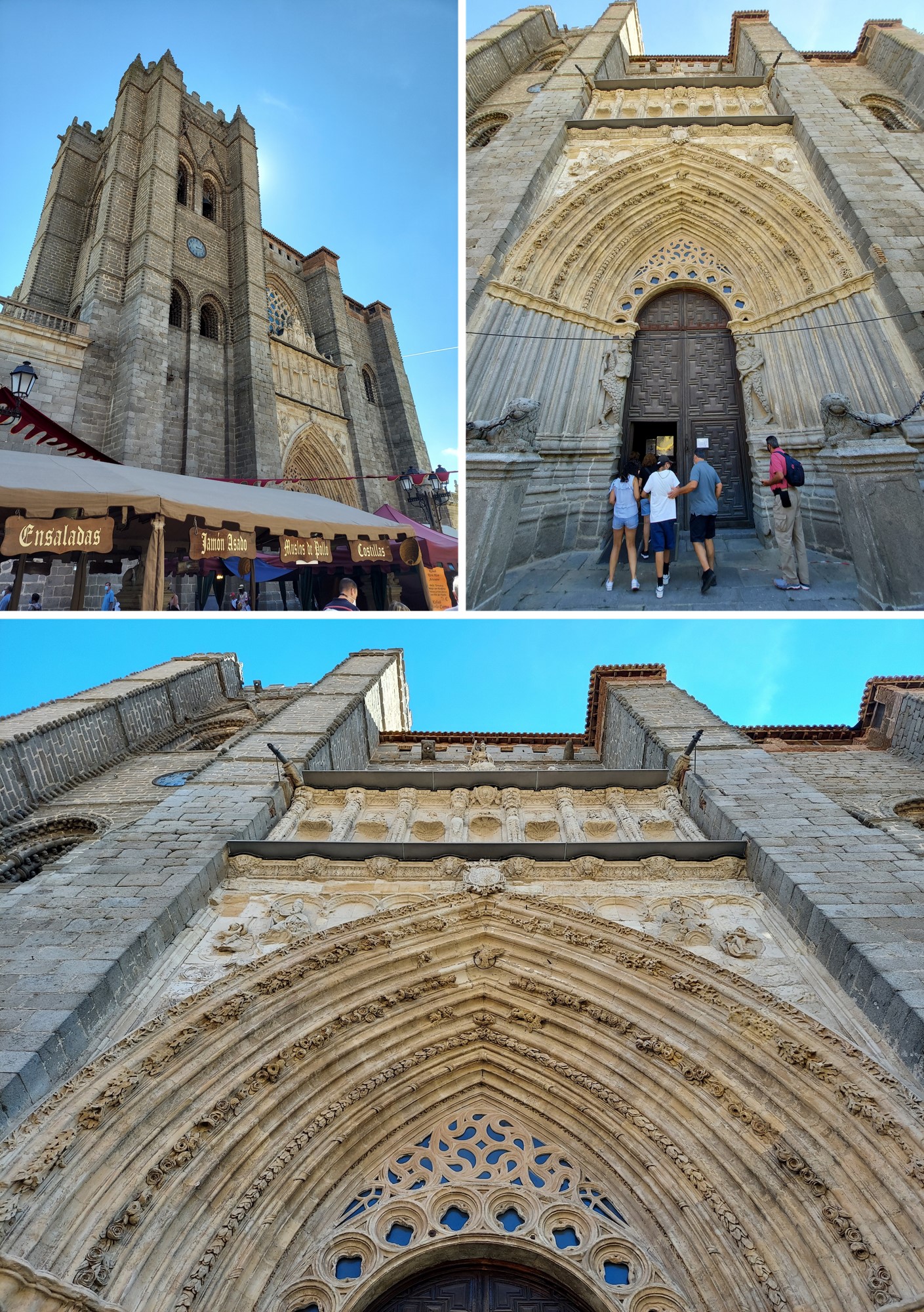
The Cathedral of Avila is entered through the Western Door, which consists of a semicircular arch decorated with medallions and floral motifs. Among the details that stand out is above the arch is a small tympanum in which a scene of the Martyrdom of Saint Segundo appears. On the sides of the entrance are one of the many curiosities of the cathedral of Avila, the presence of two savages who guard and protect the entrance to the sacred precinct. They are known as the Gog and Magog, beings that intimidate the visitor to maintain good behavior and devotion after crossing the doors.
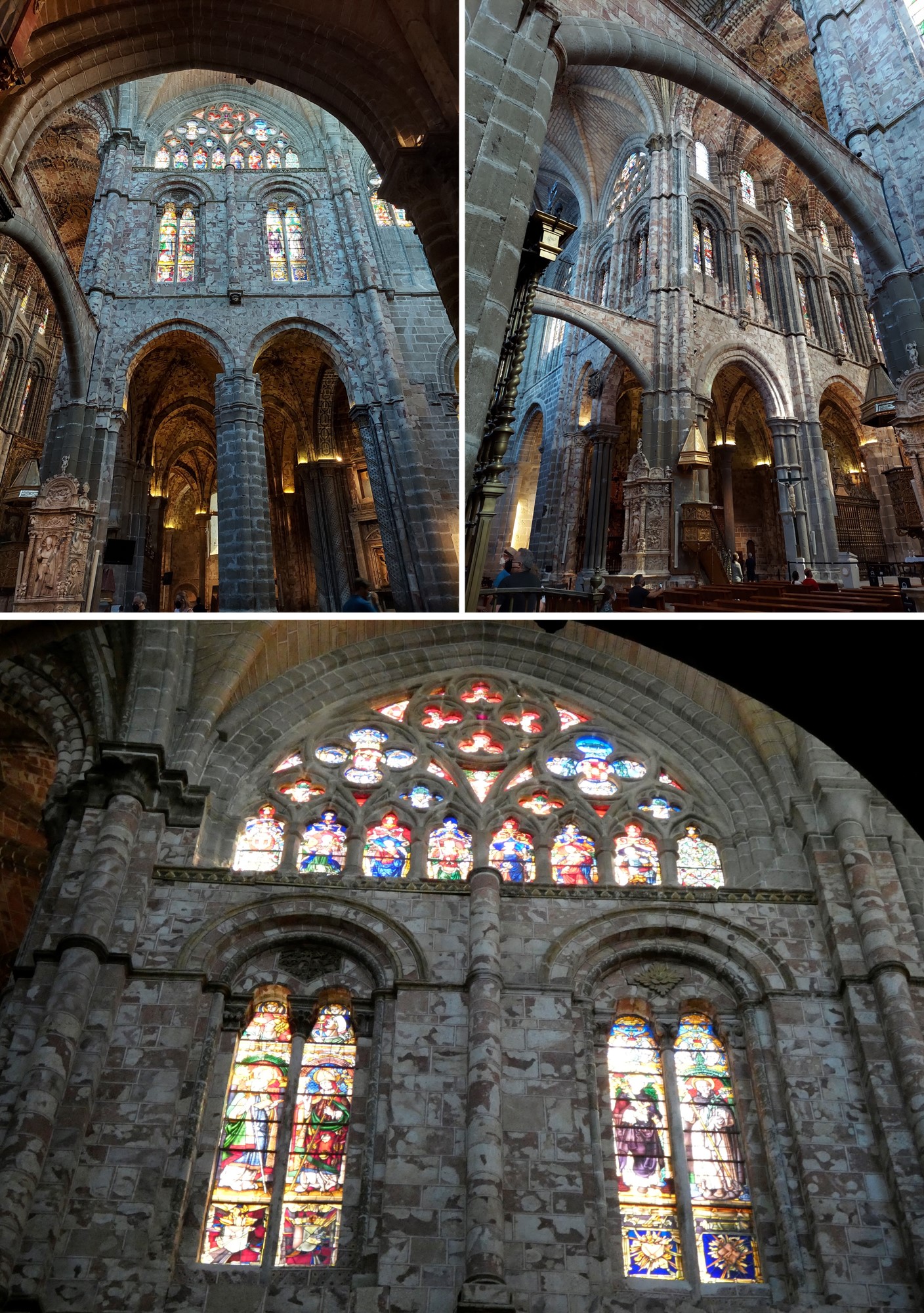
The ferruginous sandstone used on the surfaces of the Cathedral of Avila is one of the most striking elements used in this temple. As we indicated above, it is known as Bleeding Stone or bleeding “caleño” granite, receiving its name because of the iron oxide it presents in addition to the richness in shades of red and white. A material that immediately catches the visitor’s attention.
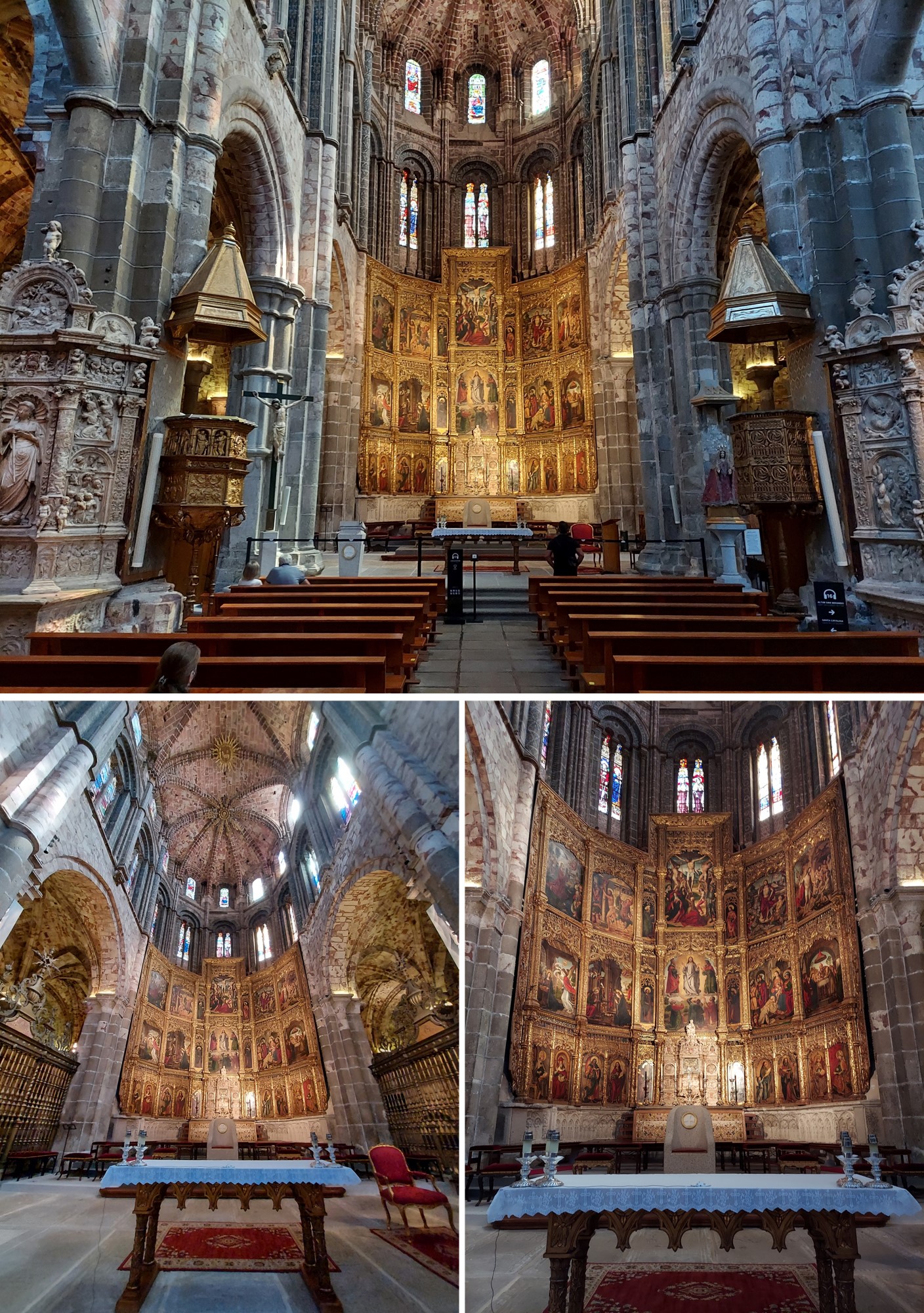
The altarpiece of the High Altar of the Cathedral of Avila was built between 1499 and 1512. This work was begun by the Palencia painter Pedro Berruguete, giving the general outlines and working on the lower body or predella, in which he represents the four doctors of the Church and the evangelists. When he died in 1503, it was the painter known as Santa Cruz who continued and finished the work left by Berruguete.
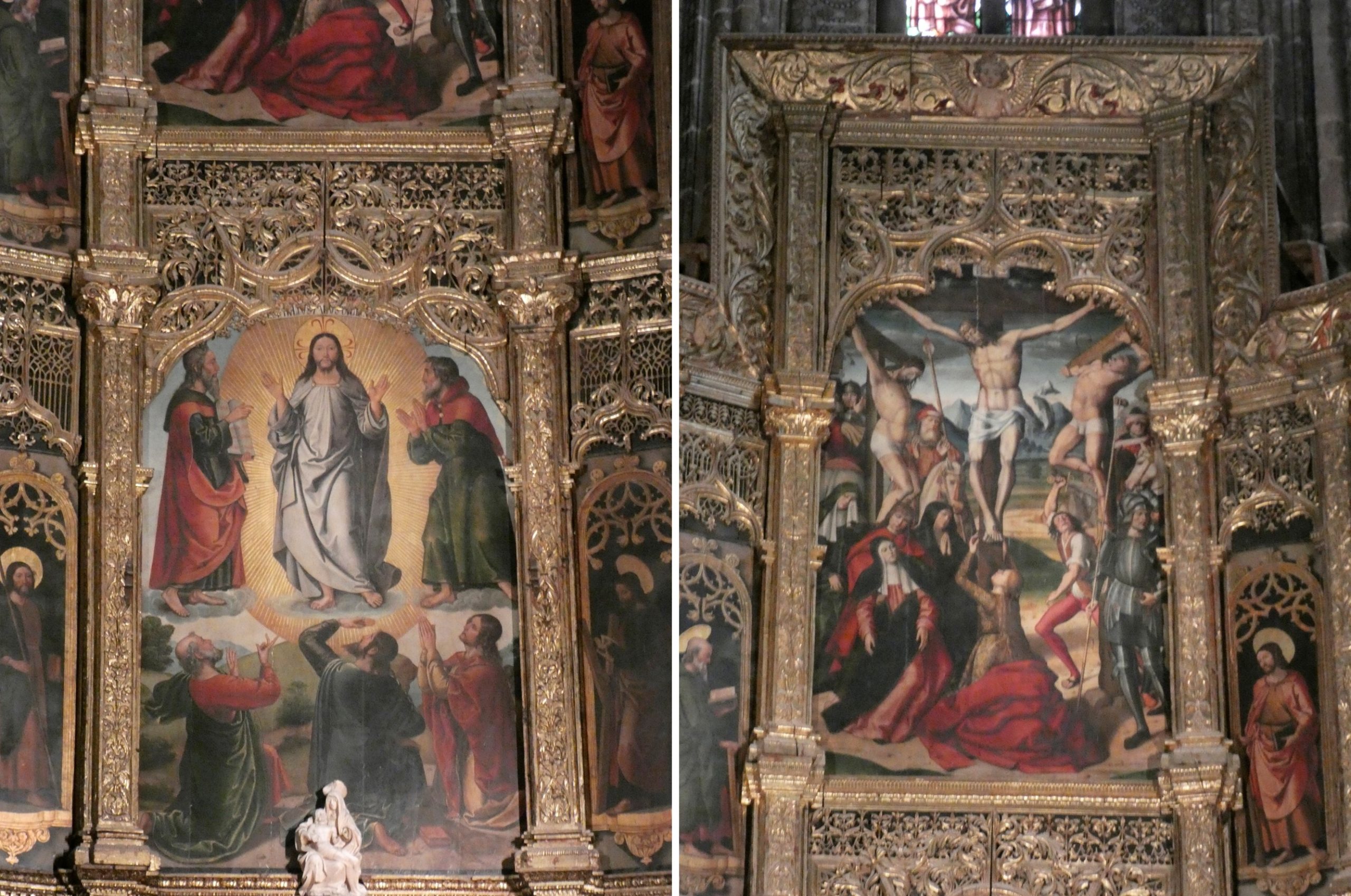
After the death of Santa Cruz in 1508, it was Juan de Borgoña who continued the program with scenes of the Epiphany and the Transfiguration. He finished the ensemble in a fully Fourteenth-century style, as opposed to the Gothic and Flemish style of the previous ones. The Quattrocento (term that in Spanish means four hundred) is located throughout the fifteenth century and can be considered as a first phase of the movement known as Renaissance. Burgundy made the scenes of the Presentation, the Descent of Christ to hell, the Nativity and the Annunciation, finishing the set in 1512. As for the alabaster tabernacle, it is one of the works of Vasco de la Zarza, of several that he made for the Cathedral of Avila.
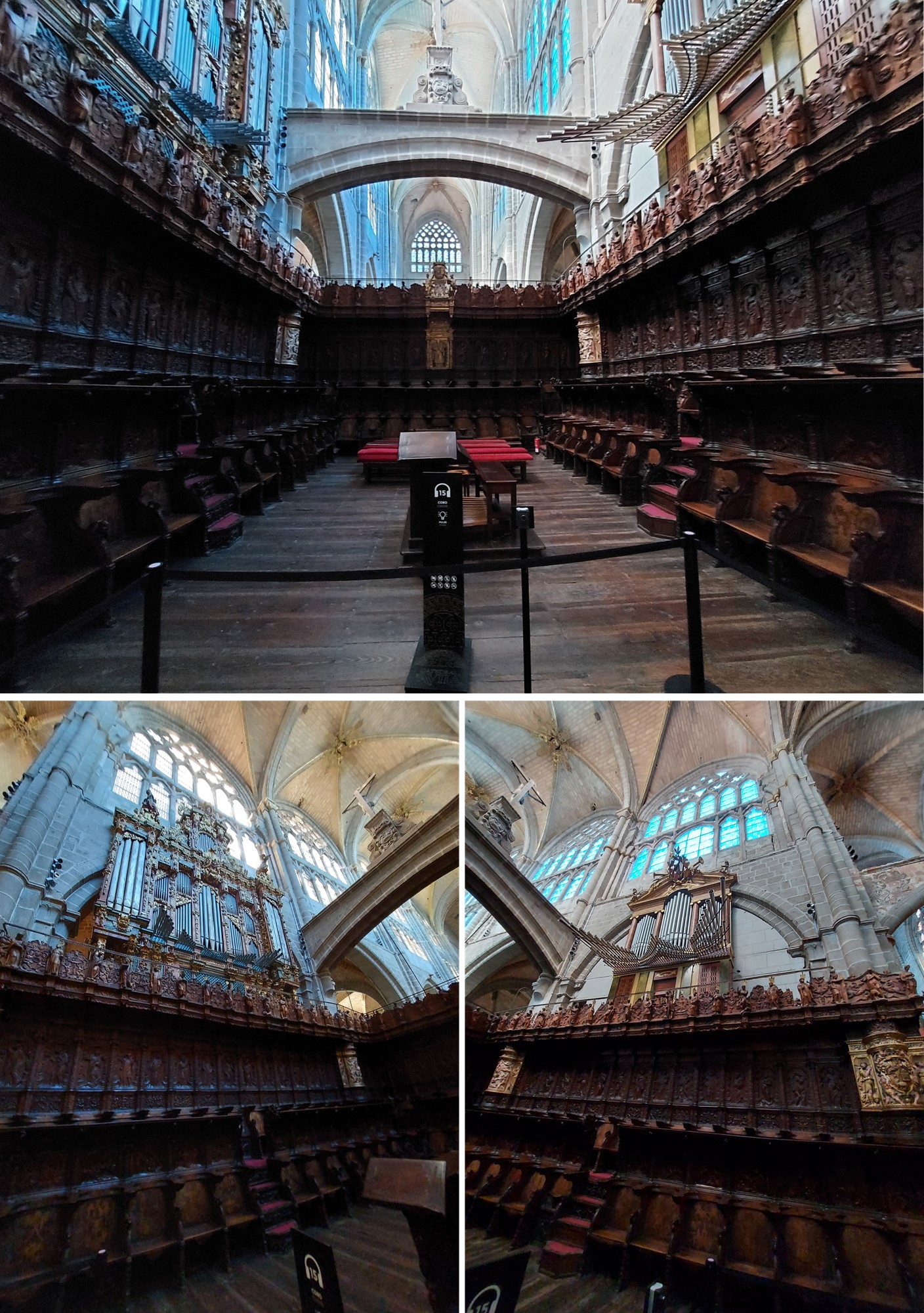
The choir of the Cathedral of Avila is a Renaissance piece begun in 1536, organized in two rows of seats and done in walnut wood. On the backrests of the first row are developed, in half relief, the lives of some saints. In addition, grotesques of genies and monstrous figures are exhibited, as well as the representation of the Apostles in the central cloth. In the center, above the episcopal chair, a polychrome sculpture of the first bishop, San Segundo. The grille that closes the whole was placed in 1760.
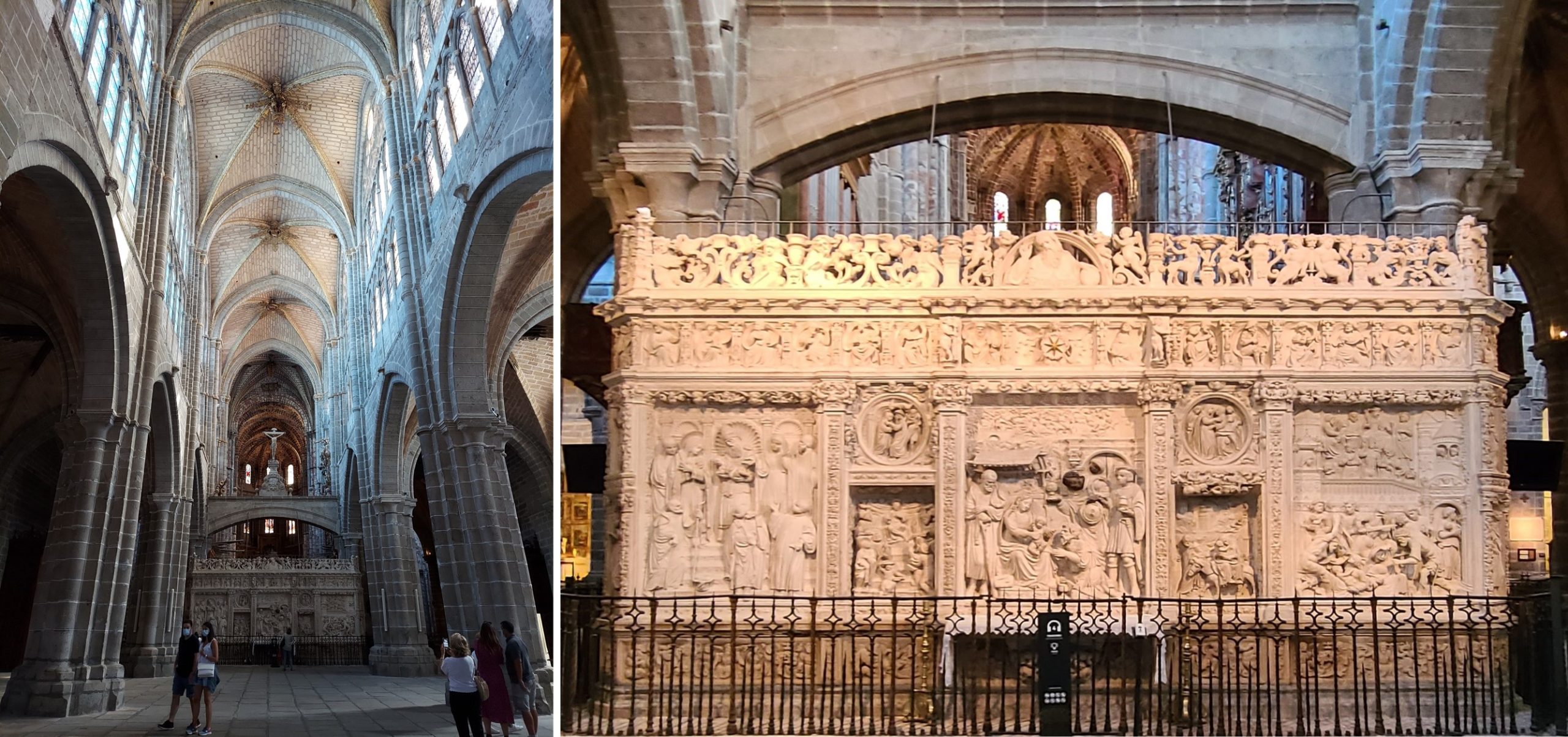
The retrochoir is a Renaissance piece, work of Juan Rodríguez and Lucas Giraldo. Commissioned in 1531, it is composed of bas-reliefs with biblical scenes, of great artistic quality. It is divided into three streets by pilasters or columns decorated “a candelieri” (with vegetal ornamentation in bas-relief), and presenting, from left to right, the high reliefs of The Presentation in the Temple, the Adoration of the Kings and the Slaughter of the Innocent.
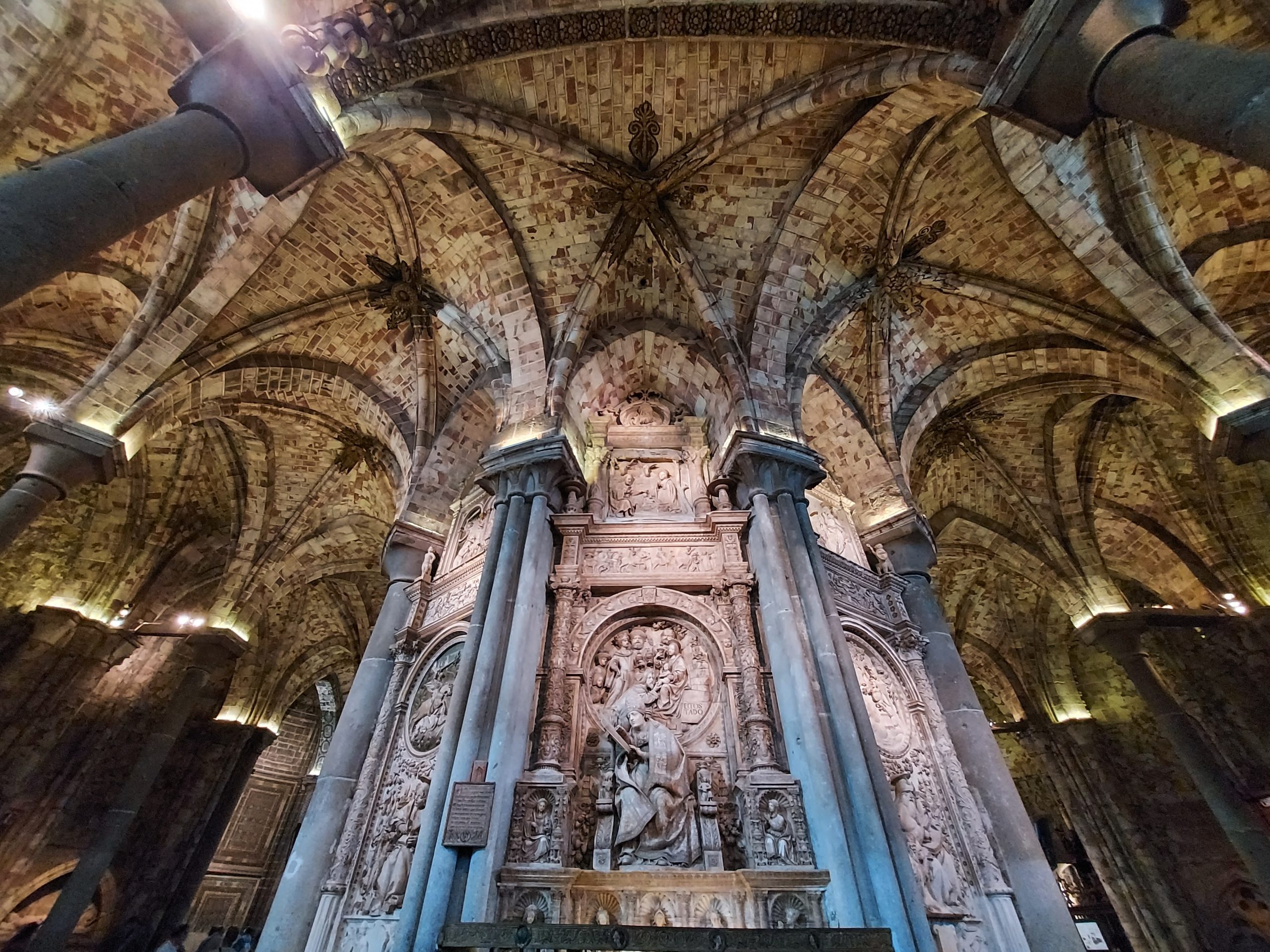
In the apse aisle of the Cathedral of Avila stands out the sepulchre of Tostado, by the great master sculptor Vasco de la Zarza from the first third of the 16th century and an essential work of the Spanish Renaissance. The apse aisle is the most primitive part of the cathedral, of greater architectural importance and whose design belongs to the architect Fruchel. The original capitals of the first construction stage stand out in this space, with scenes such as Lazarus and The Original Sin, as well as representations of fantastic animals.
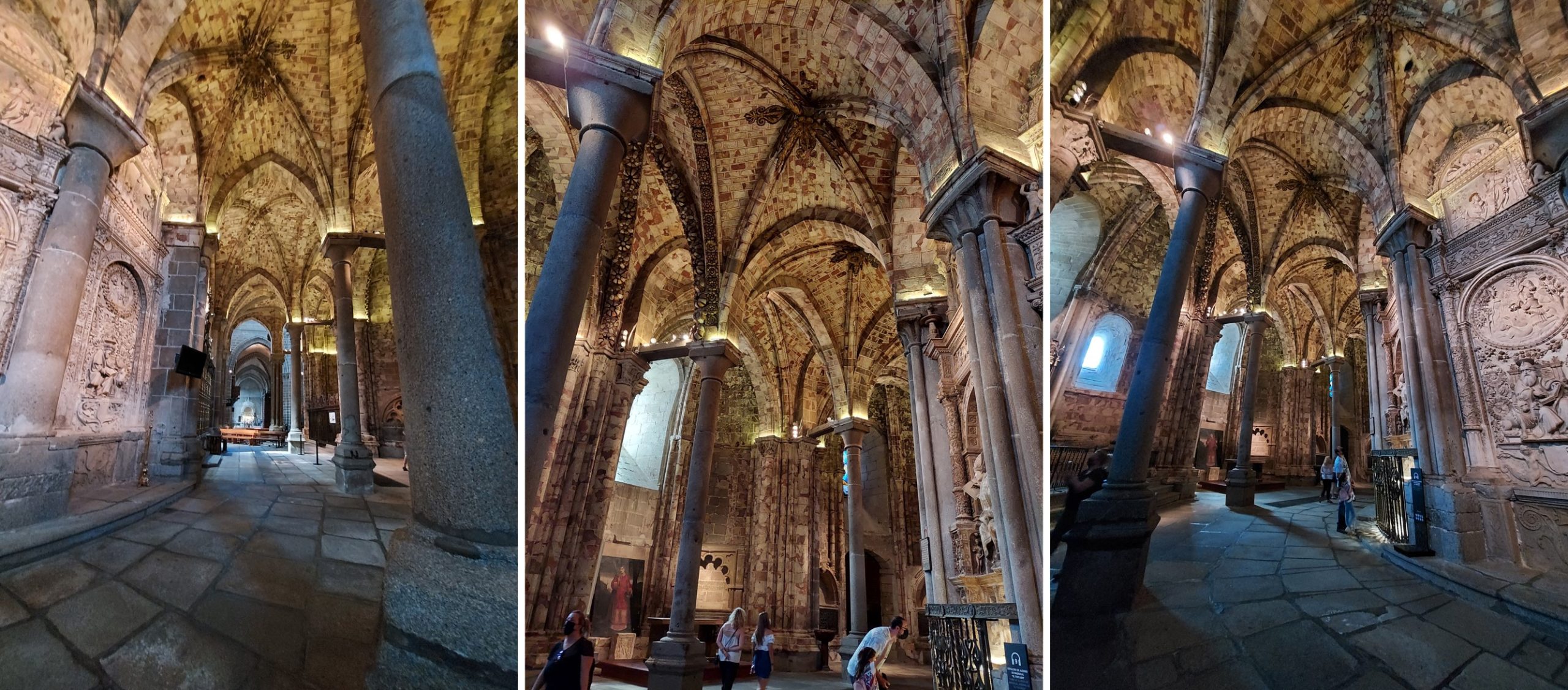
The Cathedral of Avila has twenty-four chapels distributed throughout the temple. The ambulatory or apse aisle alone has nine chapels.
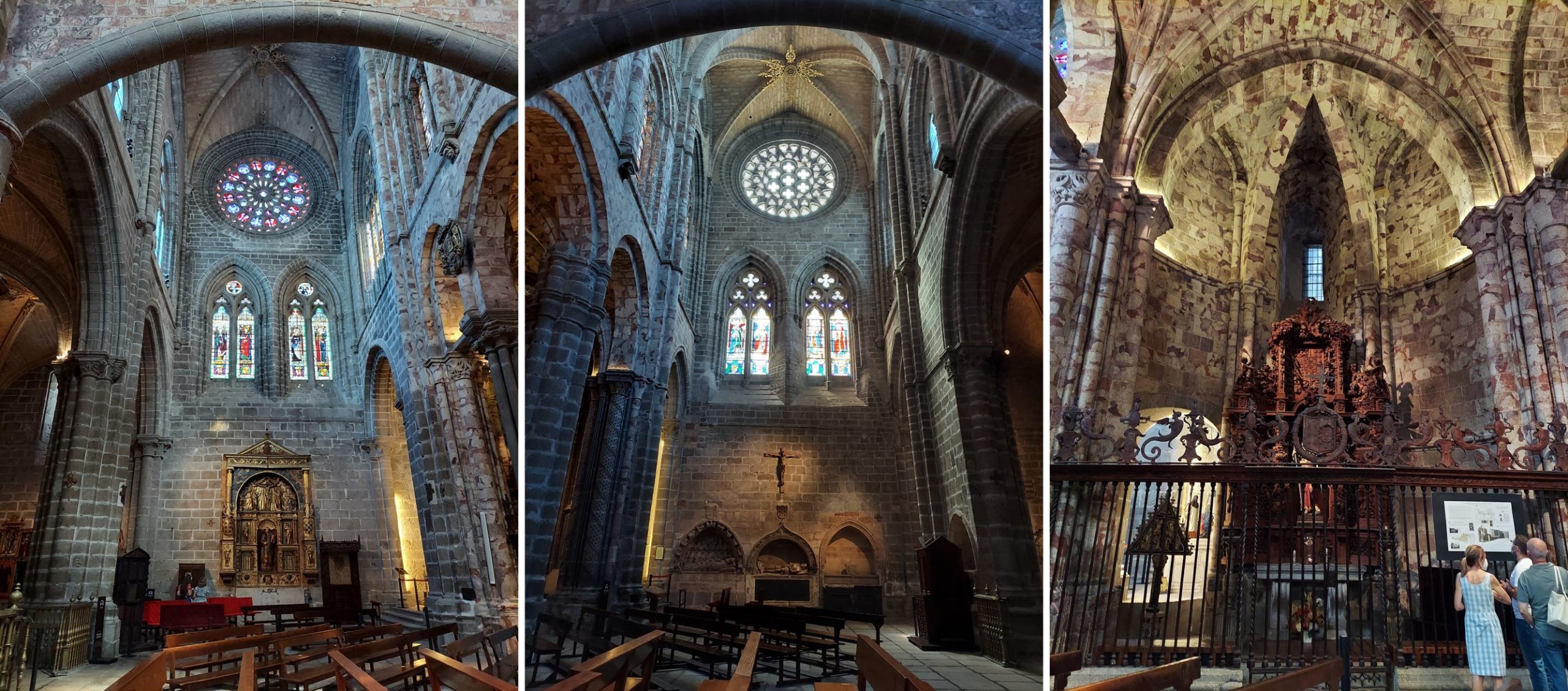
Some of the chapels that we can mention are (from Left to Right): the Chapel of San Antolín, which is the closest to the chancel and where a sculptural altarpiece from 1551 stands out. The Chapel of Santa Teresa is located in the epistle transept. It preserves the remains of mural paintings that were hidden for centuries by an altarpiece. Among the chapels located in the Girola is the Chapel of San Rafael. It has an 18th century altarpiece and the grille is from the 16th century.
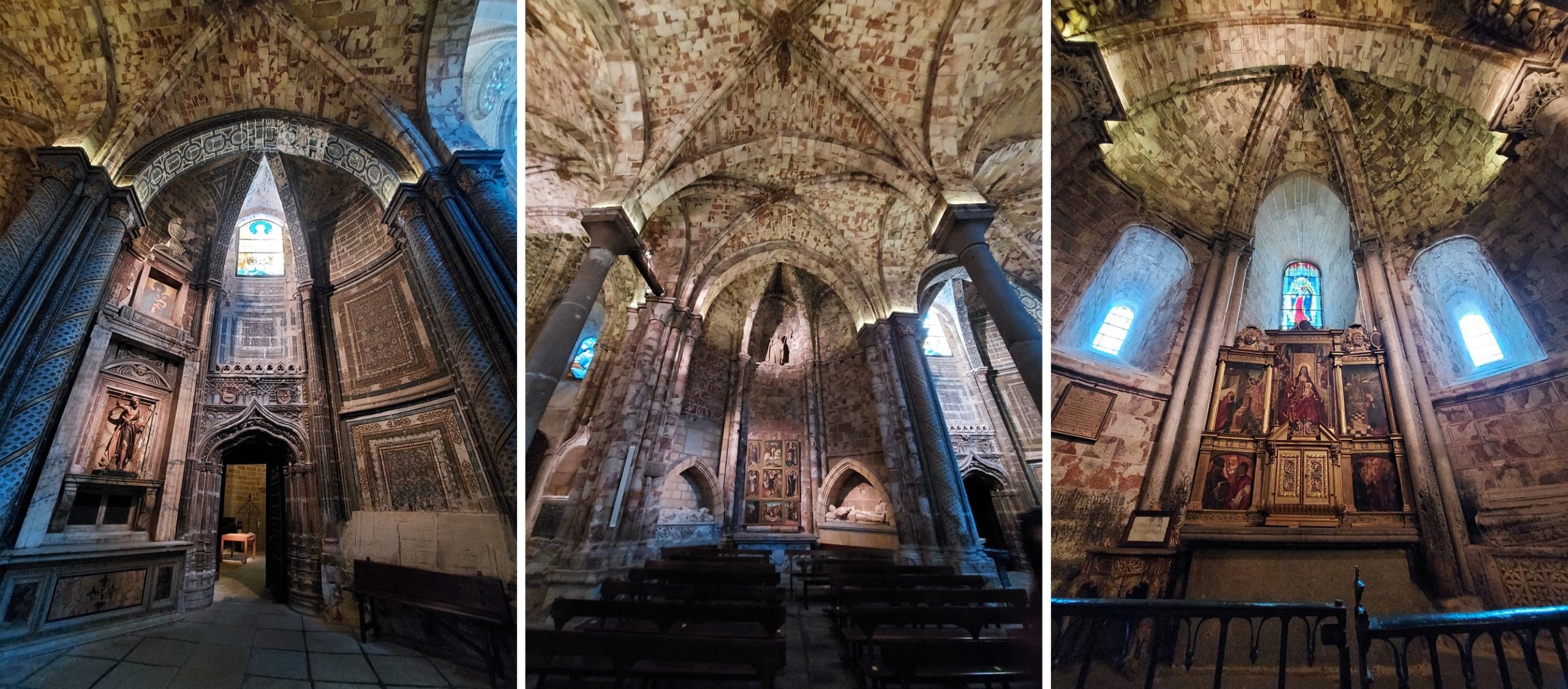
The Chapel of San Juan Bautista, which exhibits a beautiful Hispano-Flemish doorway, is believed to be the primitive Romanesque sacristy. In the Chapel of the Assumption there is a Hispano-Flemish altarpiece dedicated to St. Michael and two arcosolios (arched recesses) for burial. The Chapel of Nuestra Señora de la Gracia, is considered the oldest burial of the cathedral, where an inscription indicates a burial of 1181. It also has a Hispano-Flemish altarpiece from 1496. This chapel preserves a stained glass window with a Virgin and Child, a work from 1497.
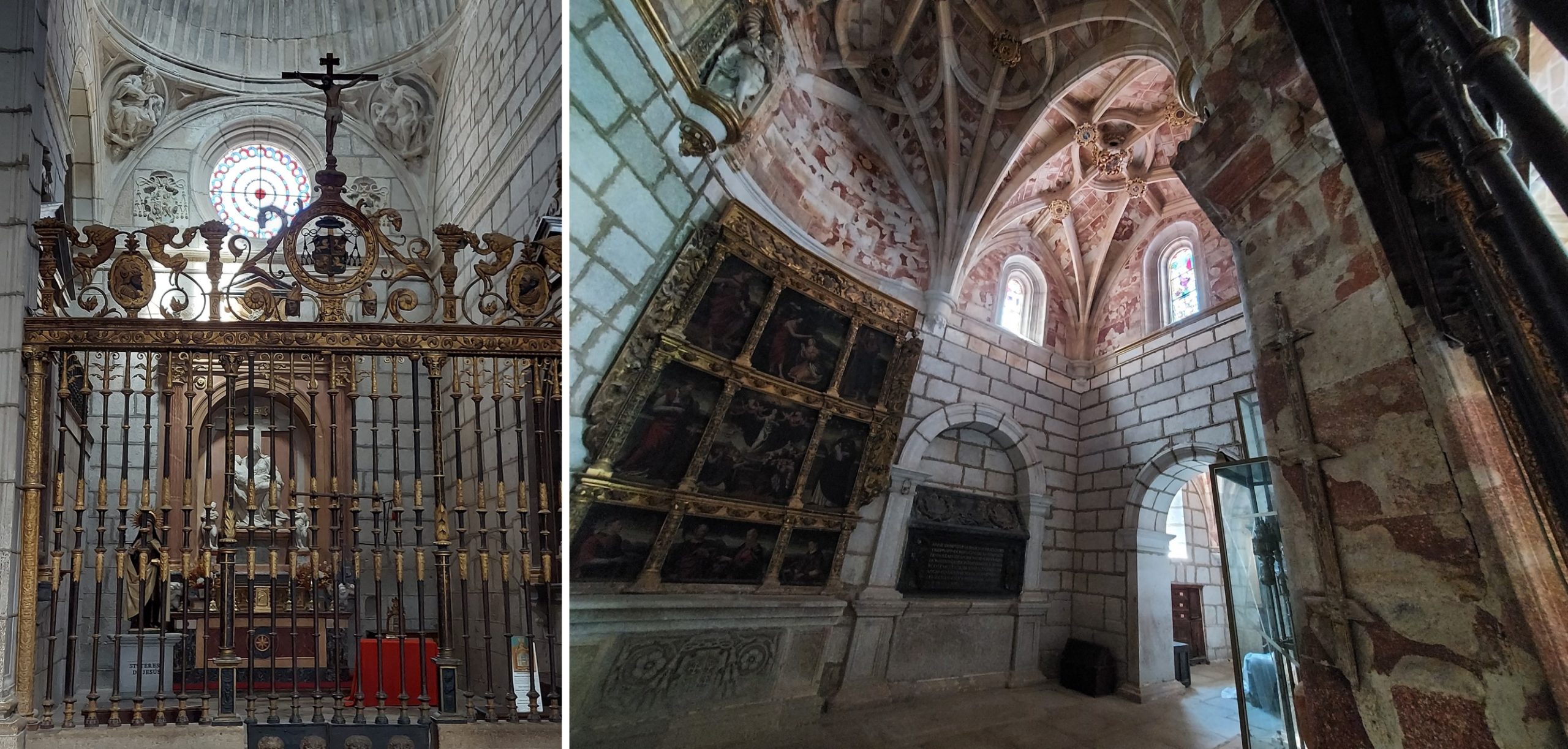
The Chapel of the Pietà was founded in the 16th century, of classical design with an ovoid dome roof. We also find the Chapel of the Caves, which was founded in 1520 and is located in the cloister. It has Gothic vaults and its roof has very beautiful details.
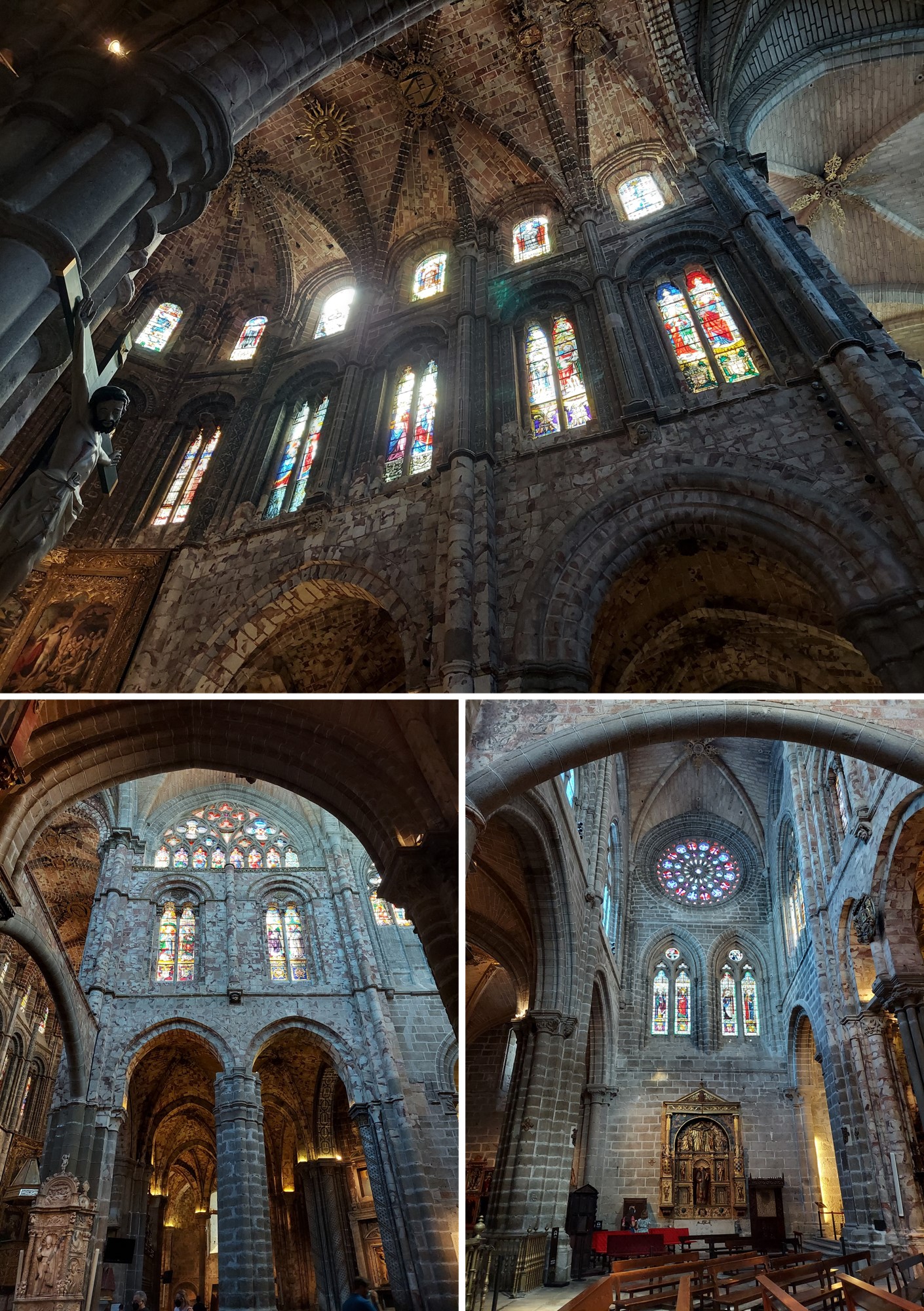
One of the most striking elements of the Cathedral of Avila are its stained glass windows. The most important are those found in the ambulatory, the main chapel, the presbytery and the transept, all from the 15th and 16th centuries. There is only one dates to a prior century; the upper central stained glass window of the main chapel, made during the 14th century.
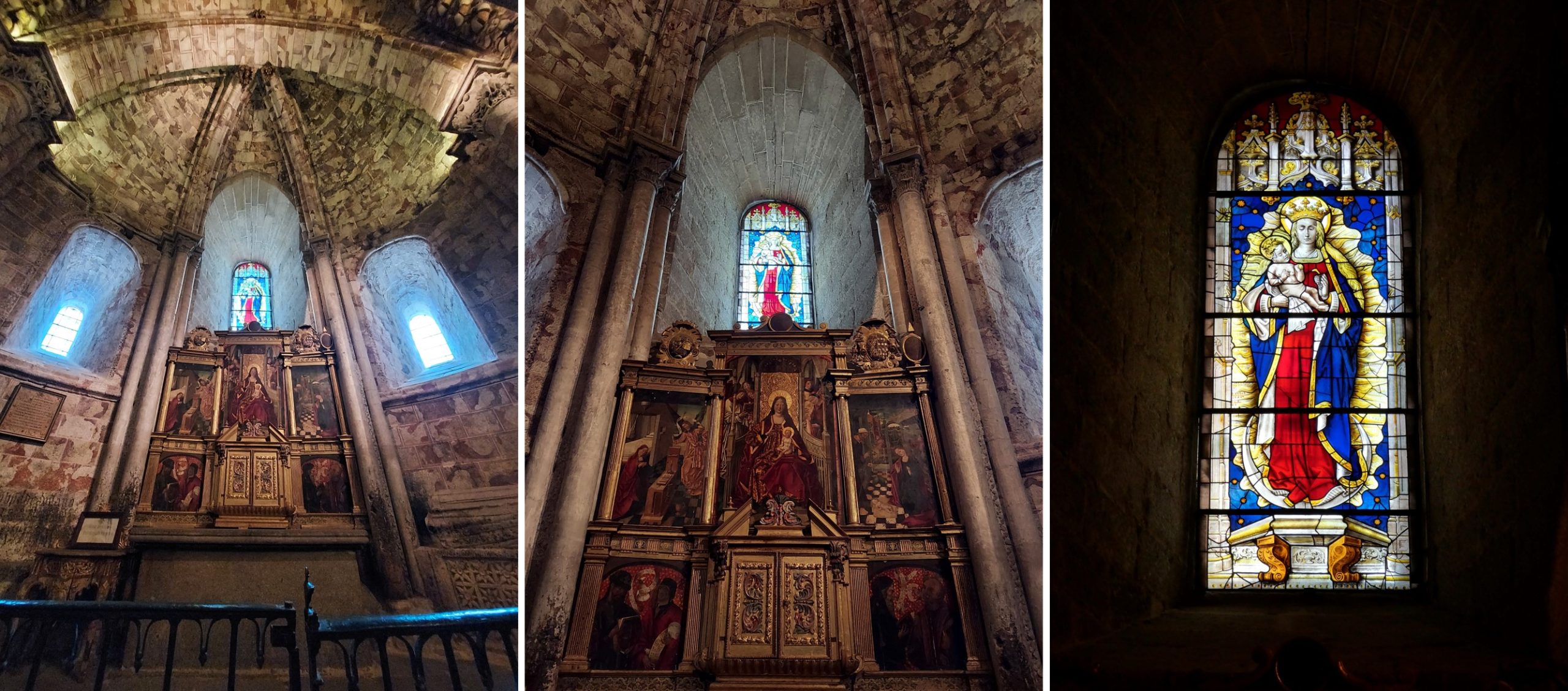
In the central chapel of the ambulatory, known as Nuestra Señora de Gracia, is located one of the most important stained glass windows of the Cathedral of Avila, a representation of the Virgin and Child. This work was made in 1497 by Juan de Valdivieso and Diego de Santillana who used the Flemish art style with great mastery.
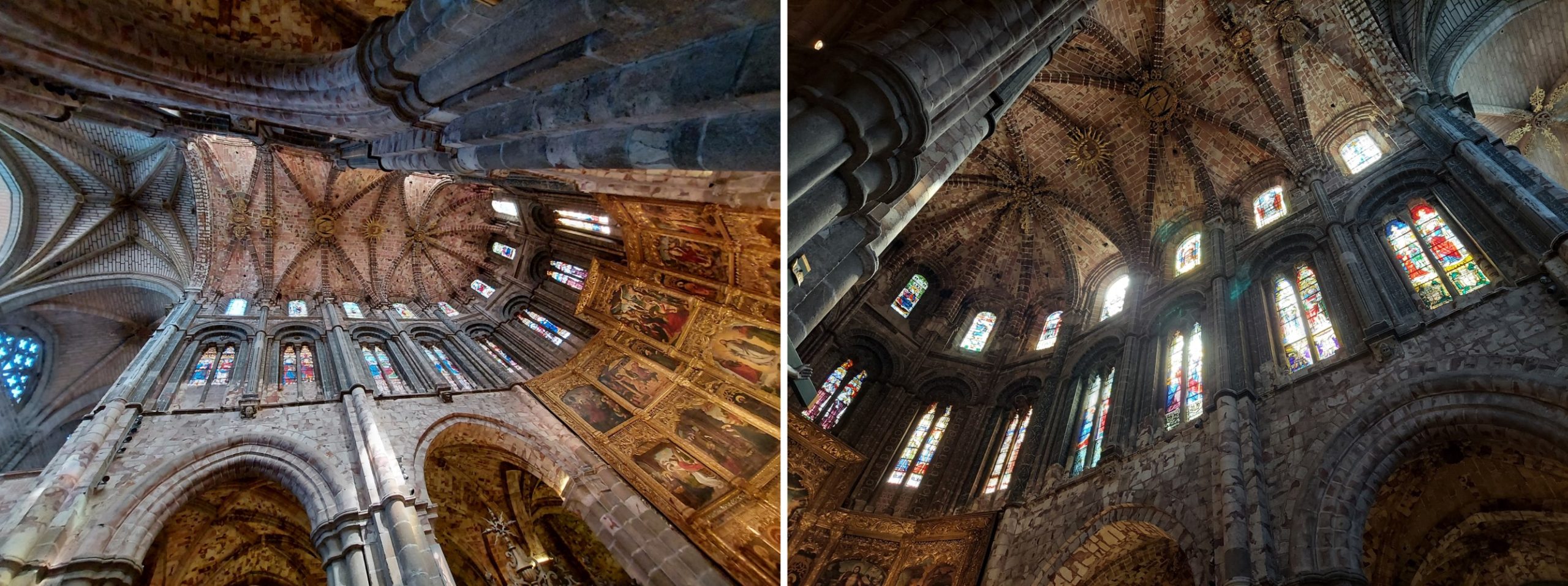
From 1520 it was Alberto de Holanda and his son Nicolás who were in charge of the continuation of the complex. They were responsible for the apostolic college of the first level of the main chapel, as well as the closing of the windows of the south transept with the representation of some saints, in which the influence of the Renaissance style can be seen through the treatment of perspective, classical ornamentation and the greater volume of the bodies.
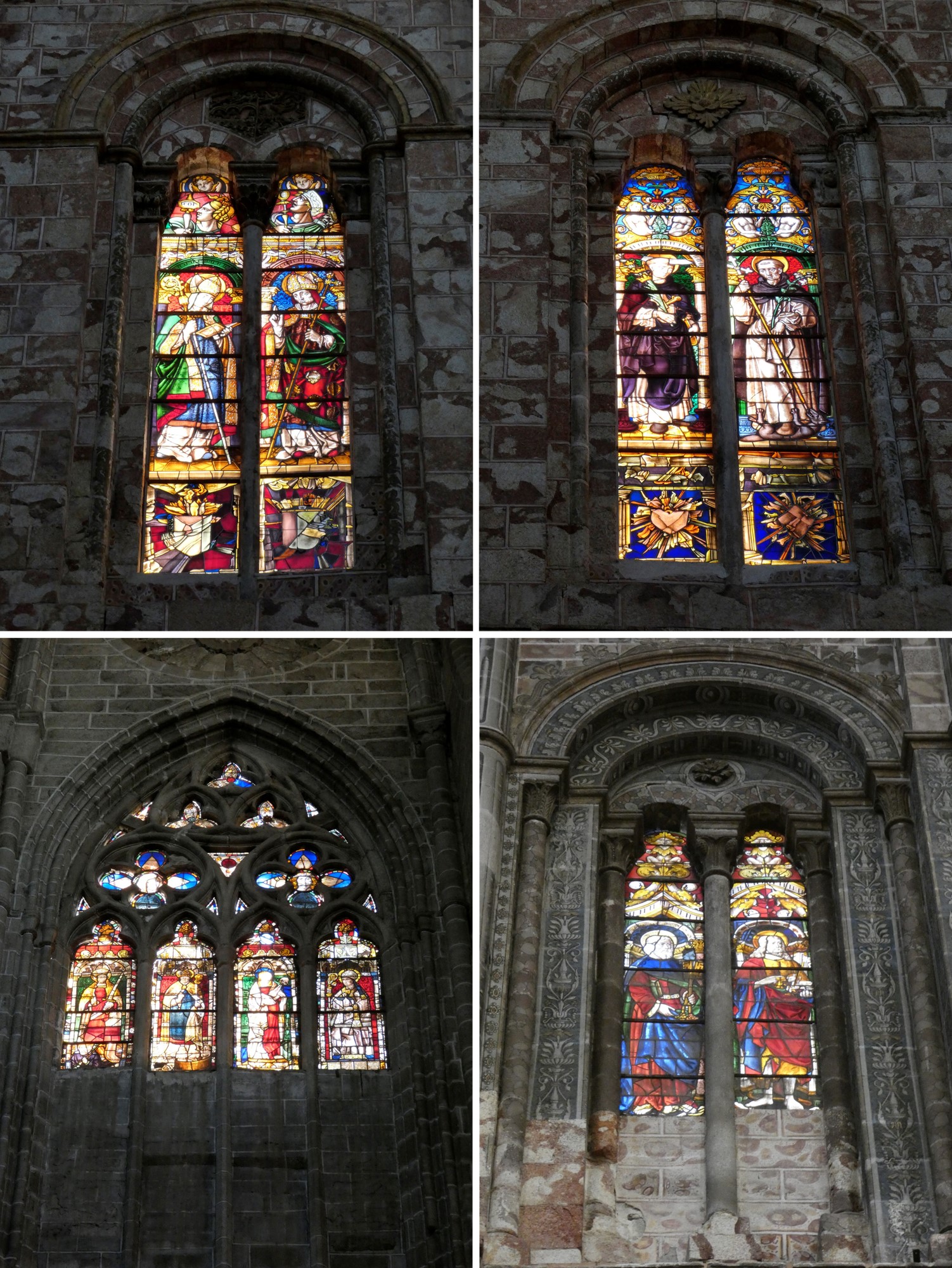
Unfortunately, the 1755 earthquake in Lisbon damaged and destroyed several stained glass windows of the Cathedral of Avila. This led to the enclosure of the whole complex, especially in the openings of the central nave.
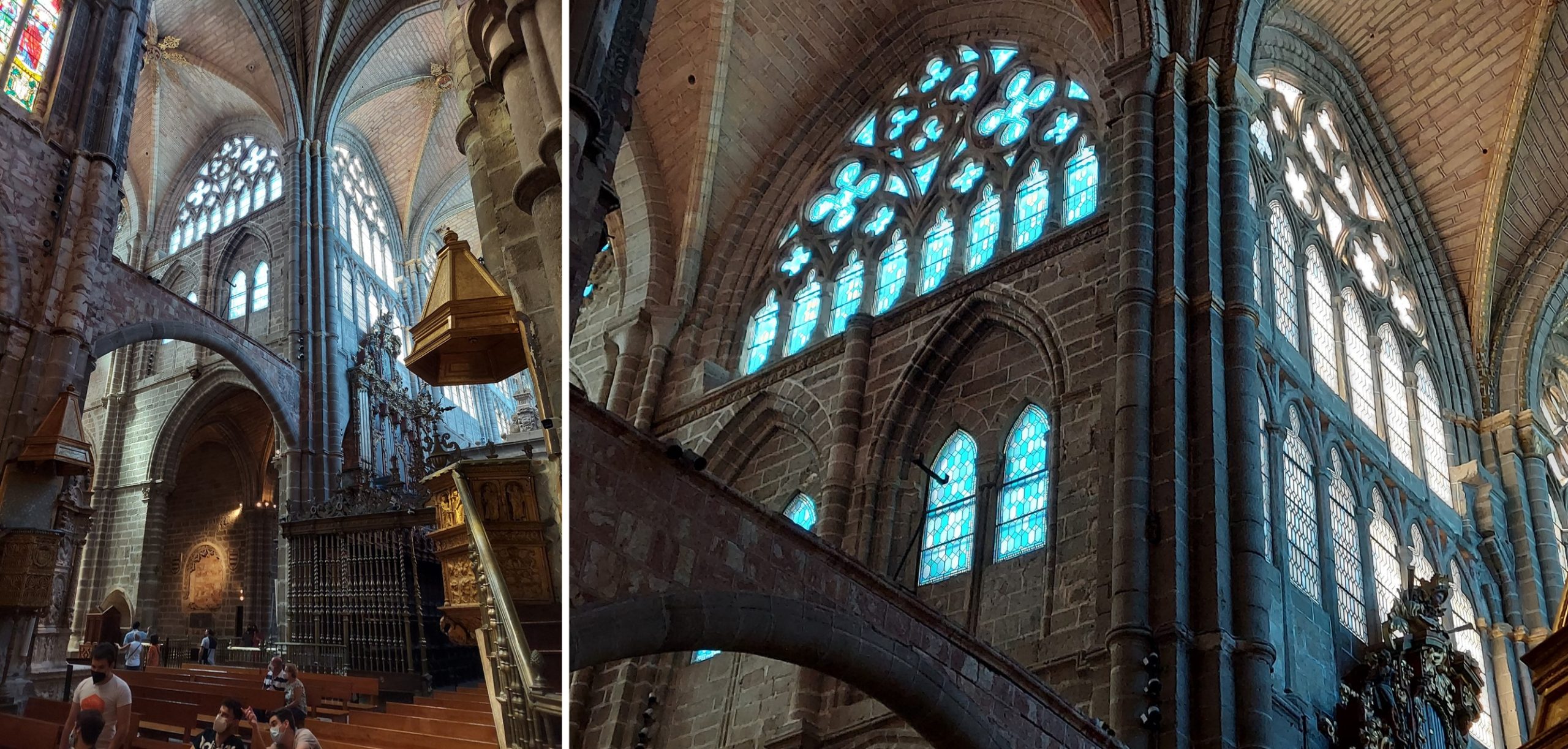
In the middle of the 20th century, a project of recovery of the stained glass windows was initiated, opening the walled-up spaces, and placing glasses of clear tones and geometric shapes. In addition, the original stained glass windows that had suffered damage were restored or new ones were made.
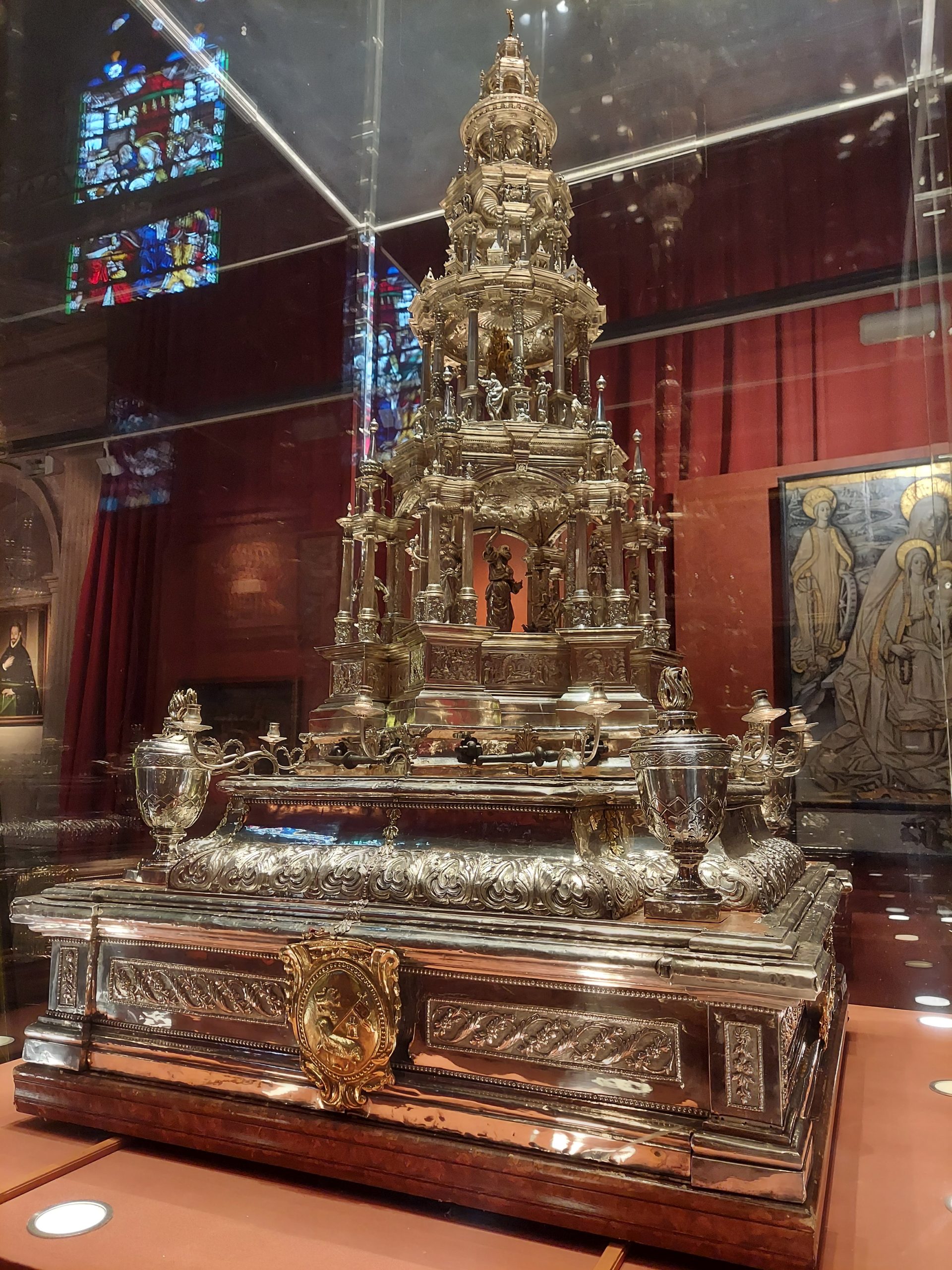
In 1564 the goldsmith Juan de Arfe, signed a contract for the realization of the seat monstrance for the Cathedral of Avila. Completed in 1571, this monstrance has six sections, with alternating hexagonal and circular bases. In the base there are thirty reliefs with scenes from Genesis. In the second body there are figures of the Fathers of the Church. In the third body is represented the Transfiguration of Jesus. The fourth body is occupied by God the Father.
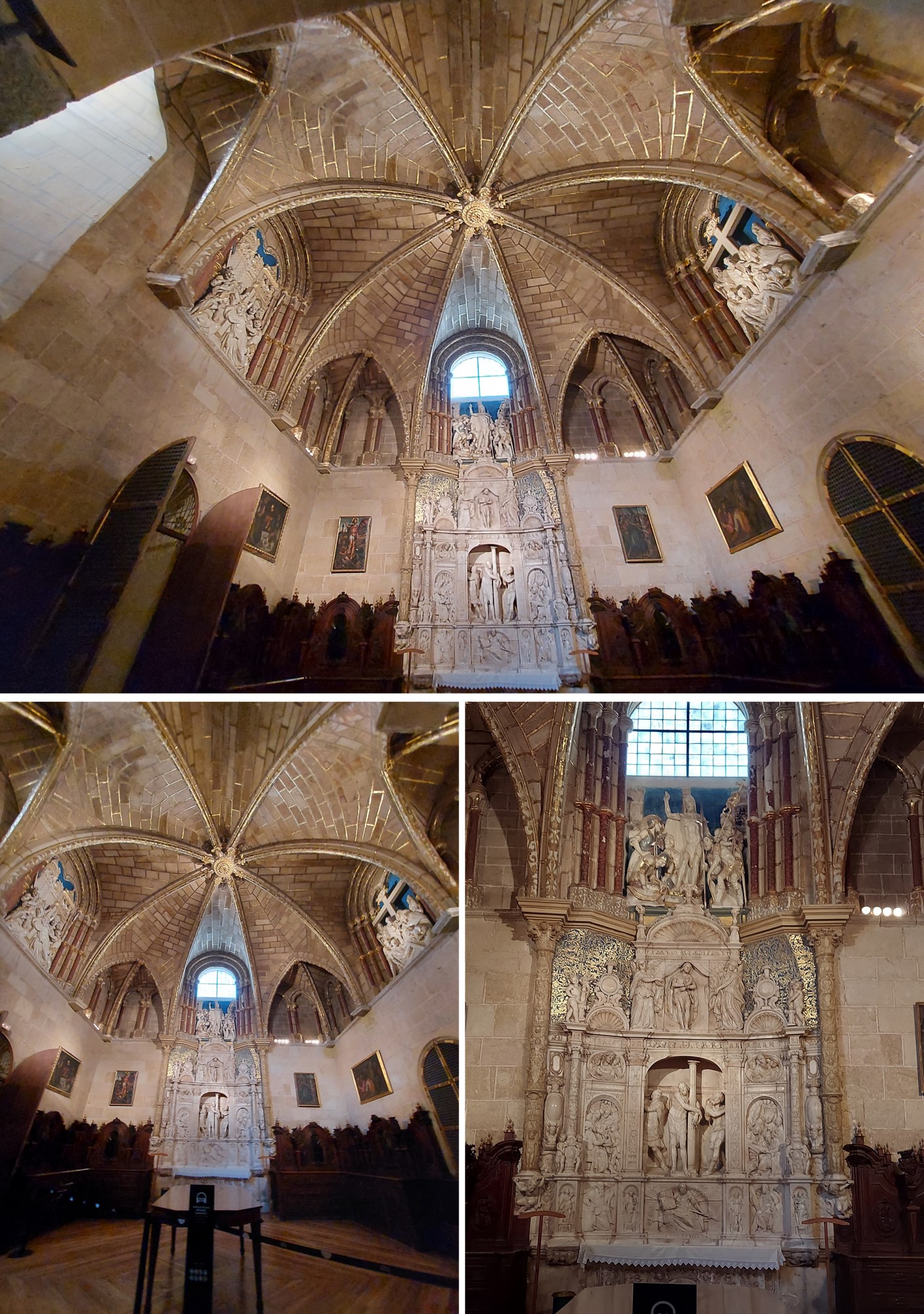
The main sacristy, which also served as the Chapter House, is known as the Chapel of Saint Barnabas. It dates to the 13th century and is thought to have had direct access through the transept of the church and the cloister. It has a square floor plan and is covered with an octagonal vault. It is decorated by sculptural groups in enameled wood that represent scenes of the Passion of Christ, work of approximately 1555. In the back there is an extraordinary altarpiece in alabaster, with the scenes of the Flagellation and the Ecc Homo, as well as reliefs of Saints Barnabas, Andrew and Paul together with the Cardinal Virtues.
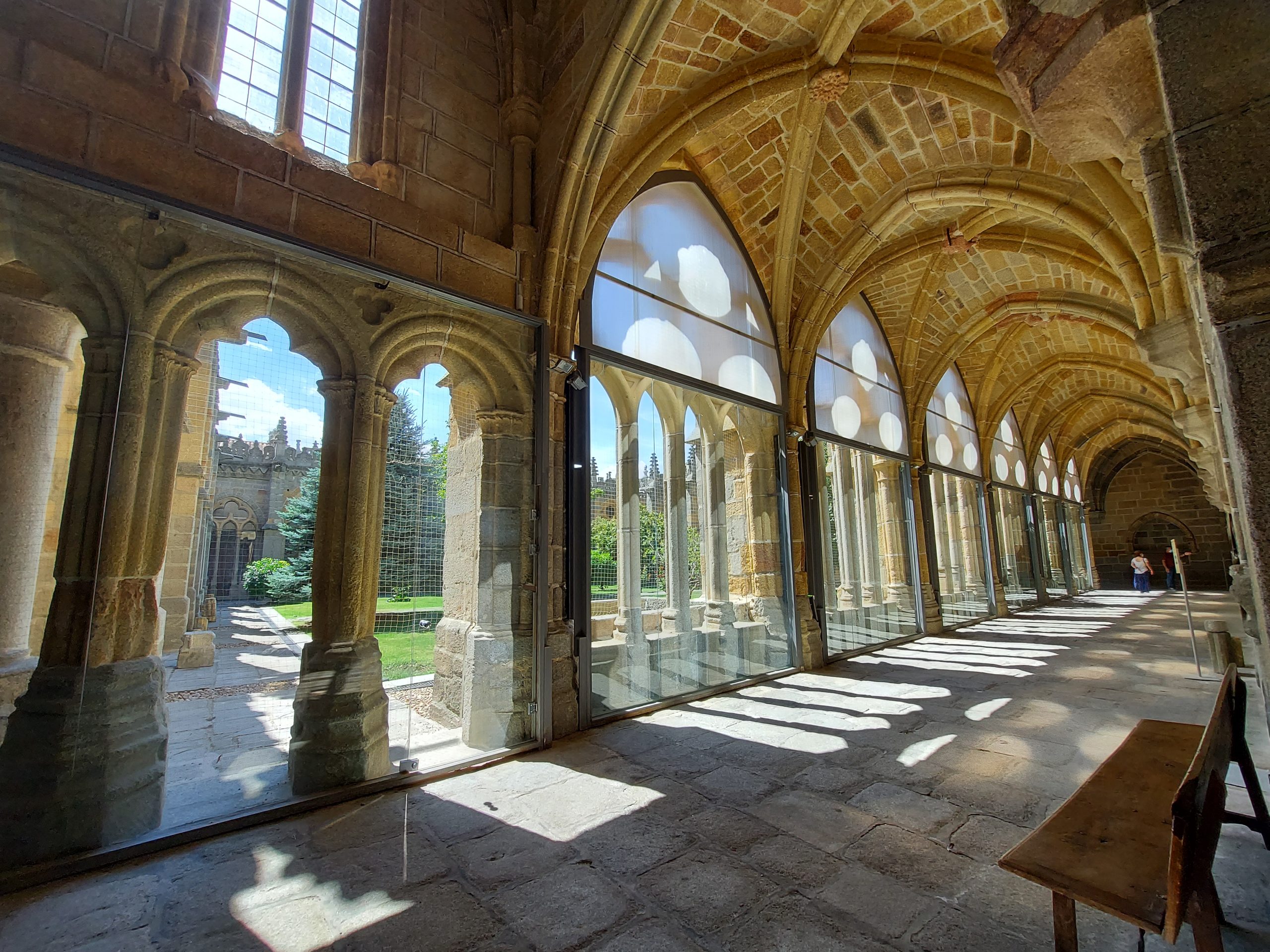
The cloister began to be built in the 14th century in Gothic style and was not finished until the beginning of the 16th century, when it was completed with a Renaissance granite cresting. Walking through its interior, one can see its ribbed vault ceiling and the large Gothic windows that open onto the courtyard. Three chapels open onto the cloister: the Chapel of the Caves (1540), the Chapel of the Virgin and the Chapel of the Crucifix (1580).
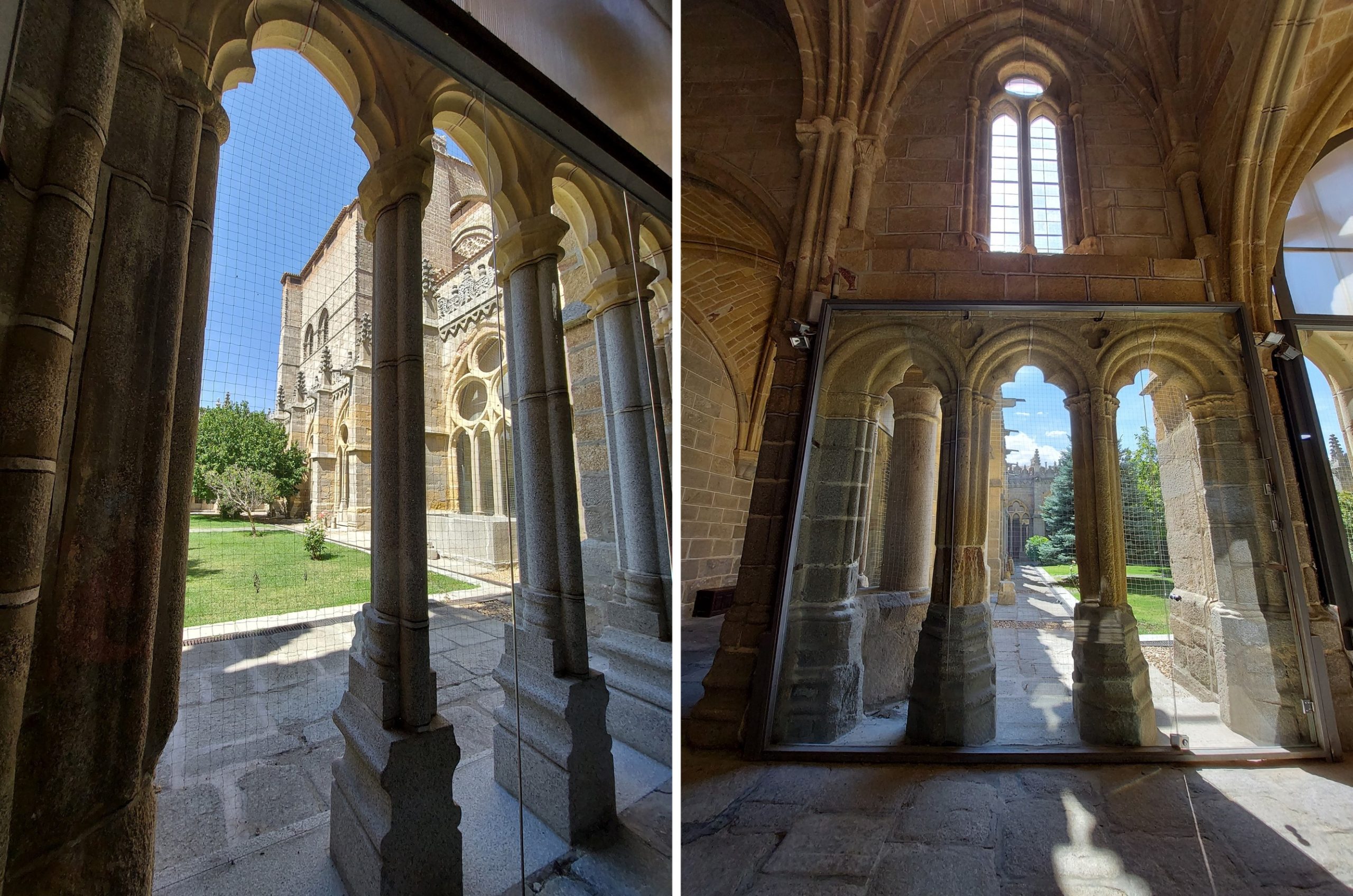
The windows that can be seen were placed in 2004. Adaptations that were worked for the Exhibition of the Ages of Man with the objective of isolating the interior from the inclemency of weather.
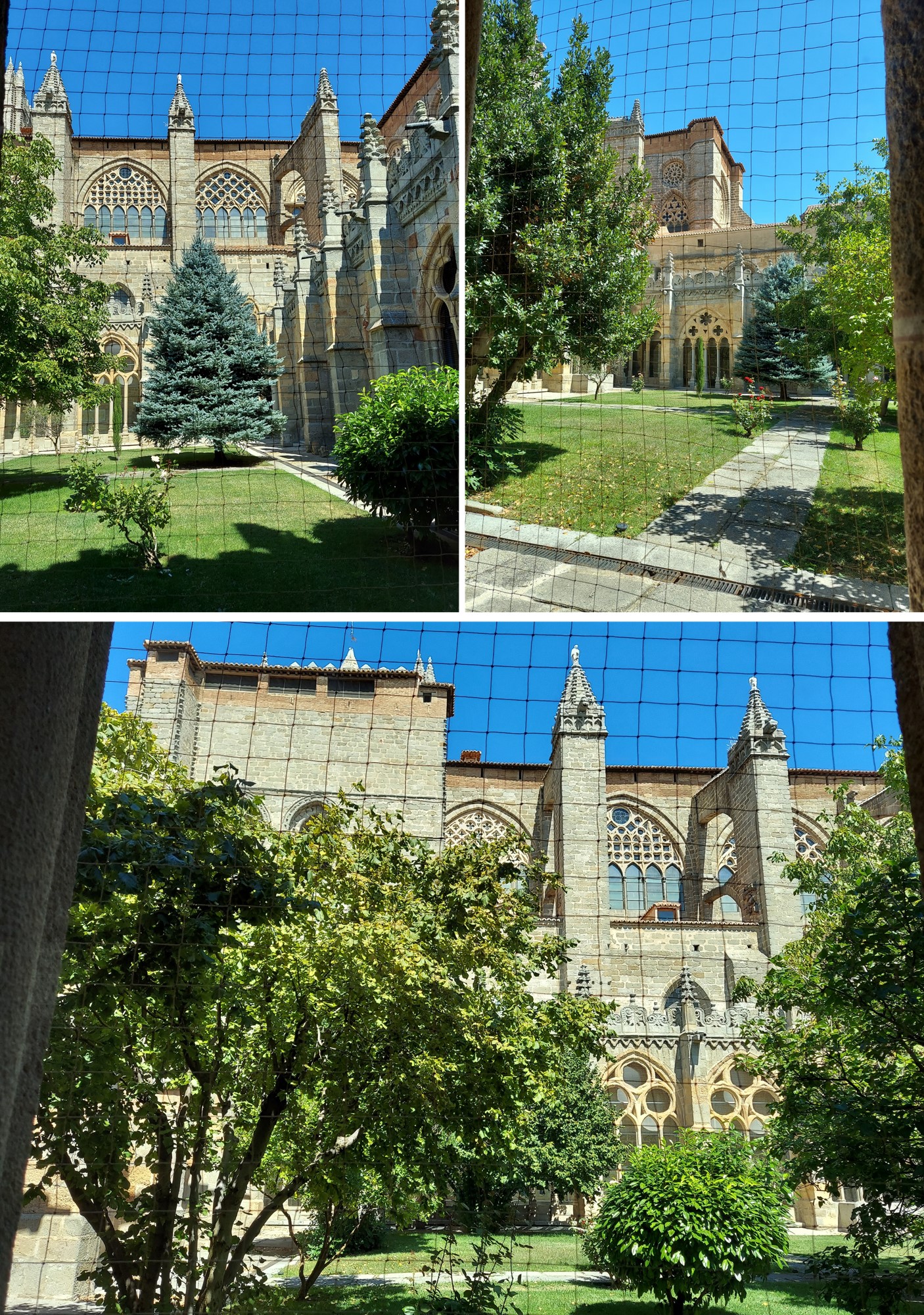
The present arcades to the garden are the result of restorations carried out in the 1980s that removed the 18th century partitions.
The Cathedral of Avila was declared a National Monument in 1949. The mortal remains of the historian and ex-president of the government of the II Republic in exile, Claudio Sánchez-Albornoz, and the president of the Government of Spain from 1976 to 1981 Adolfo Suárez and his wife, Amparo Illana, lie in rest in this Cathedral.
***************
Resources:
https://www.avilaturismo.com/eventos-principales/jornadas-medievales
https://eventespana-com4.webnode.es/donde-ir-/avila/avila-romanica/
https://es.wikipedia.org/wiki/Catedral_de_%C3%81vila
https://catedralavila.es/la-catedral/historia-de-la-catedral/
